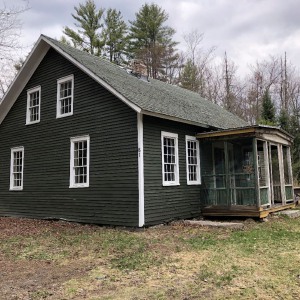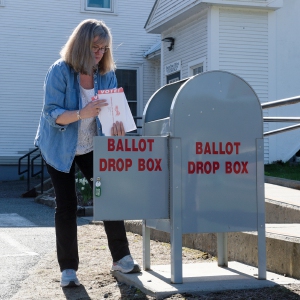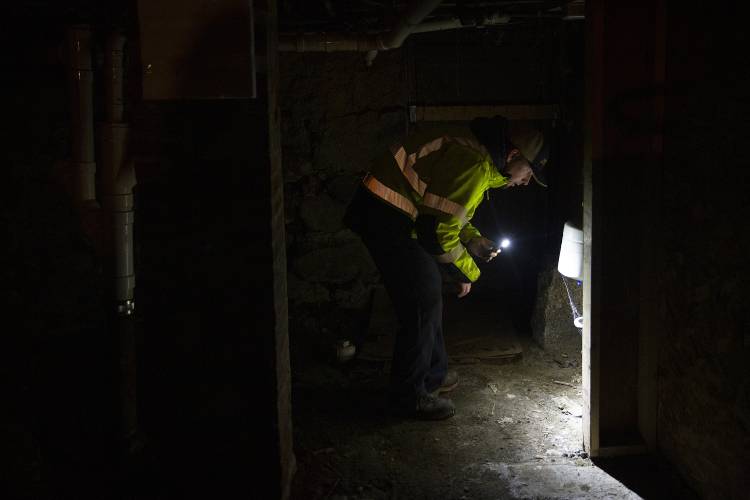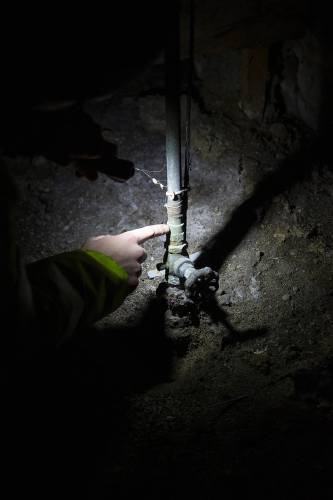Lead waterline replacements keep Upper Valley public works departments busy
|
Published: 01-20-2024 6:05 PM
Modified: 01-23-2024 8:07 PM |
LEBANON — A fast-approaching federal deadline to identify lead piping in municipal waterlines, and create a detailed plan for replacement, has sent some Upper Valley public works departments scrambling.
The task, as mandated by the Environmental Protection Agency, is a “big effort,” Lebanon Public Works Director Jay Cairelli said.
The department’s employees — who usually keep the city’s faucets and roads functional — have now been knocking on doors and descending (with residents’ permission) into private basements.
“We haven’t found any lead service lines ever in Lebanon,” Cairelli said. “But there are quite a few galvanized service lines, which can also sometimes contain lead, and they want us to remove those as well.”
In 2021, the EPA passed more stringent caps on permissable lead concentrations in water, and later a policy that requires water system operators to locate lead service lines — which are the pipes that run from the water main in the street to a house or business — and report a replacement plan.
They have until October to do so.
Lead exposure can cause brain, blood, kidney and nervous system damage, and increase the chance of learning and behavioral issues, especially among exposed young children, according to the nonprofit Public Health Council of the Upper Valley. One in five attention deficit disorder diagnoses can be attributed to lead exposure, according to the American Academy of Pediatrics.
The city is responsible for identifying lead in the sections of its water service that run from the water main to the curb stop, but the public works department also is trying to locate any lead in the privately-owned water lines.
Article continues after...
Yesterday's Most Read Articles
 Dartmouth administration faces fierce criticism over protest arrests
Dartmouth administration faces fierce criticism over protest arrests
 Hanover house added to New Hampshire Register of Historic Places
Hanover house added to New Hampshire Register of Historic Places
 Sharon voters turn back proposal to renovate school
Sharon voters turn back proposal to renovate school
“People can call us if they’re able to identify their pipes themselves, or we set up a visit,” Cairelli said. “Some people don’t respond so we have to follow up.”
The city has records for most of Lebanon construction, which the department can use to check if lead was used in pipes without even going to someone else’s property, Cairelli said.
But documentation for some of the property in older residential neighborhoods — like Maple Street and Kimball Shaw Forest — is more sparse. “Anything that’s not after 1960 or ‘70, we really have to verify,” Cairelli said.
Lebanon has over 3,300 water accounts that it must check in on. With a $50,000 grant from the New Hampshire Department of Environmental Services the city hired a consultant, and is partly bankrolling some of the extra staff time the sprawling task requires.
“People can call us if they’re able to identify themselves, or we set up a visit,” he said. “Some people don’t respond, so we’re doing a lot of follow-ups.”
Other municipalities have already been chasing down lead piping for years.
Claremont, where many of the houses were constructed pre-1978 — before lead paint was banned — was an early participant in “Get the Lead Out,” a national campaign to help municipalities address lead remediation.
The efforts raised awareness of the impacts of lead, and spurred action on pipe identification. The city has “been at it” since 2016, said Director of Public Works Alex Gleeson. Cataloging and replacement is nearly complete.
“We were front-runners in mapping it out and chipping away at it,” Gleeson said. Claremont is doing it with “whatever money we can scrape up.” The state revolving loan fund, which loans money at low-interest rates for water projects, has been helpful, he said.
But as the costs of materials rise, the goal post gets pushed back. And some are critical of the EPA for not earmarking enough money for the massive national project in the first place, as the state revolving loan fund is increasingly stretched thin by other water needs, including the remediation of perfluoroalkyl and polyfluoroalkyl substances, known as PFAS chemicals.
John Coffey, who has been the wastewater and water operator in Canaan for 11 years, serves on the board of directors for the Granite State Rural Water Association.
The EPA is “supposed to put $2.1 billion aside for next year for all of this,” said Coffey, who’s headed to Washington in two weeks as a member of the water association to meet with the federal agency. “That sounds like a lot of money but the big systems will eat that up quick.” A better number — more attuned to the demands of the task at hand — would be closer to $10 billion, he said.
The EPA did not respond to request for comment by deadline.
The American Public Works Association is urging the agency to allocate more money for lead pipe service line replacement, or risk shifting “much of the cost to communities, and ultimately the citizens they serve,” a letter from the organization to the federal agency reads.
Last fall, Coffey met with the EPA in Denver. “I came to them and asked how hard is this deadline going to be. A lot of times they’ll put out a deadline but let it go out farther.”
This time, the agency won’t be lenient, he said.
“They’re under a lot of pressure,” Coffey said. “Because this whole thing about leaded water has to do with people’s health, and especially children’s health.”
Coffey remembers being glued to the television as news broke about the Flint, Michigan water crisis, when 100,000 residents were exposed to elevated levels of lead in their drinking water. “We watched it every night,” he said. “The lead blood levels there were through the roof.”
In March, Canaan residents will vote on whether to greenlight the town’s acceptance of a $780,000 funding package from the state’s environmental services department to replace lead service lines. A chunk of the money — $234,000 — would be in the form of a loan.
“The money that’s out there is going to disappear,” Coffey said. “If we’re even at the curve, let alone behind it, there won’t be any money left.”
Frances Mize is a Report for America corps member. She can be reached at fmize@vnews.com or 603-727-3242.



 Students take down pro-Palestinian encampment at UVM
Students take down pro-Palestinian encampment at UVM
